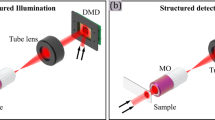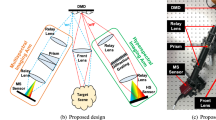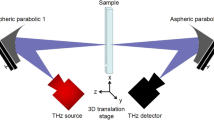Abstract
IT is often desired to combine light from two sources without generating multiple images in the mixing device. Image multiplication, which results from extra reflexions, occurs in methods already in use, such as a partly aluminized mirror, a sheet of plain glass used as a mirror, or a mixer cube (otherwise used as a beam-splitter). With the last, the apparent multiplication of the sources may not be as obtrusive as with the first two, but the mixer cube has other disadvantages, being less economical than the method described here, in which the components can serve other purposes when the device is no longer needed.
This is a preview of subscription content, access via your institution
Access options
Subscribe to this journal
Receive 51 print issues and online access
$199.00 per year
only $3.90 per issue
Buy this article
- Purchase on SpringerLink
- Instant access to full article PDF
Prices may be subject to local taxes which are calculated during checkout
Similar content being viewed by others
References
Jenkins, F. A., and White, H. E., Fundamentals of Optics, third ed. (McGrawHill, 1957).
Brindley, G. S., Sci. Amer., 209, 85 (1963). Le Grand, Y., Les Yeux et la Vision (Dunod, 1960).
Author information
Authors and Affiliations
Rights and permissions
About this article
Cite this article
RUDOLF, N. Optical Combination of Two Sources avoiding Multiple Images. Nature 202, 79–80 (1964). https://doi.org/10.1038/202079a0
Issue date:
DOI: https://doi.org/10.1038/202079a0



